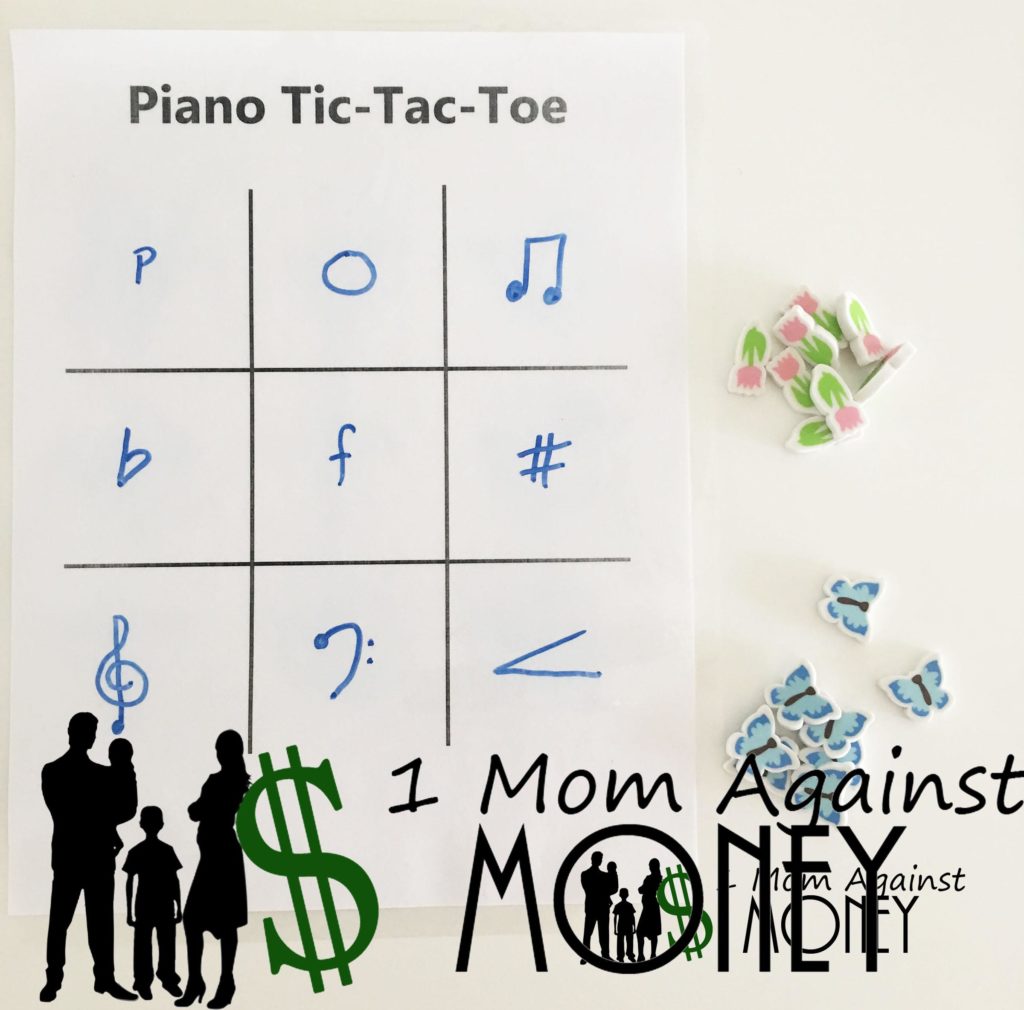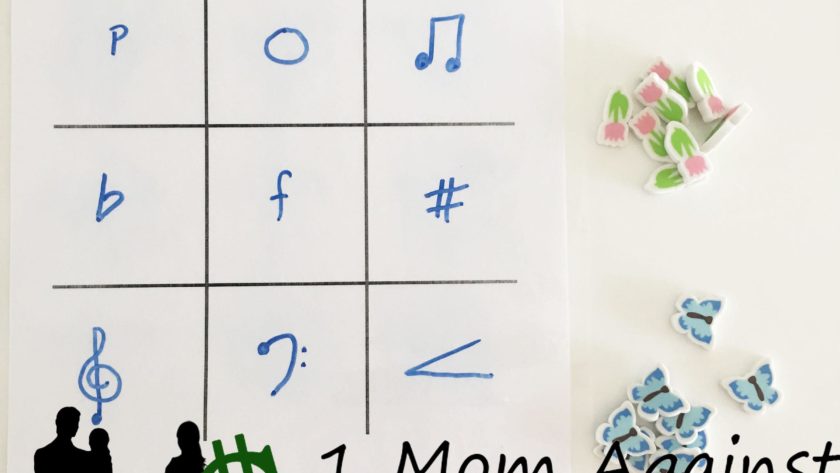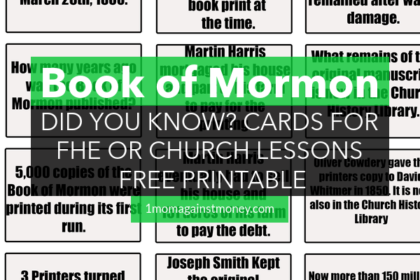
Simple versatile games are a great way to reinforce piano and music concepts. This one is so easy, everyone knows how to play Tic-Tac-Toe, so I don’t have to spend a lot of time explaining. The only difference is that each player has to answer a question or identify something before getting to place their marker in the box. There is a free download at the end of the post for a large Tic-Tac-Toe game. I laminated mine and use a dry erase marker when needed to add things in the boxes. But Tic-Tac-Toe is easy to quickly draw on a page too.
4 Ways to Play Piano Tic-Tac-Toe
- Using note identification flashcards

This is a great way to encourage note identification without just holding up a flashcard. I’ll often go through and pick out specific cards that I know a student needs to work on. For example maybe they are having a hard time identifying notes below the staff in bass clef. I’ll take those out and use them for our game. I usually turn them over just to make it a little more challenging, and I always review a little before hand. I don’t believe in “testing” a student. I want them to understand how to figure out the answer and I want them to feel comfortable asking me questions when they don’t understand. We are doing one on one lessons so I don’t see any reason to make them feel frustrated or confused. The goal is to help them learn music and we can go at whatever pace is necessary to do that. (Soapbox over)
2. Basic Music Symbols

This version is perfect for newer students. I use a dry erase marker to write in common music symbols and they tell me the name and what it does, then place their marker. Oh! I most often use cute little erasers, but just writing in an X or O would work too.
3. Measure Number Playing

In this version, the student plays the measure number to place their marker. I use this as a fun way to introduce a new piece, or when a student is really struggling to identify where they need to practice. As they play each measure we will occasionally stop and mark spots where the student should focus practicing. This takes much longer than the other ways, but is very beneficial. I will play measures too. Sometimes purposefully picking measures where the student had a hard time with rhythm or finger placement etc. This gives them a chance to hear it without me having to come out and say “you had a hard time with this I’m going to play it for you so you can hear it.”
This game version also relieves some pressure. I have a few students who get extra nervous playing a whole piece and will often tell me that they played it just fine at home, and I believe them, but it is hard to know what they are truly having a hard time with (other than nerves) if I don’t get to hear them play passages without nerves being such an issue. By having them play only a small part with the focus more on a game, they often are able to control nerves a little better. It gets them over that bump of thinking “I always mess up this part when I play in front of others.” That little bit of extra confidence often flows over into the rest of the lesson.
4. Rhythm

I like to use this version whenever a new note is introduced to a student. I have them clap or play the rhythm to be able to place their marker. Super fun and easy.
One last little tip

If you are teaching a virtual or online lesson this game is easy to use if you number each square. Then the student can just tell you which number they want to pick.
I hope this fun game helps in your teaching!





